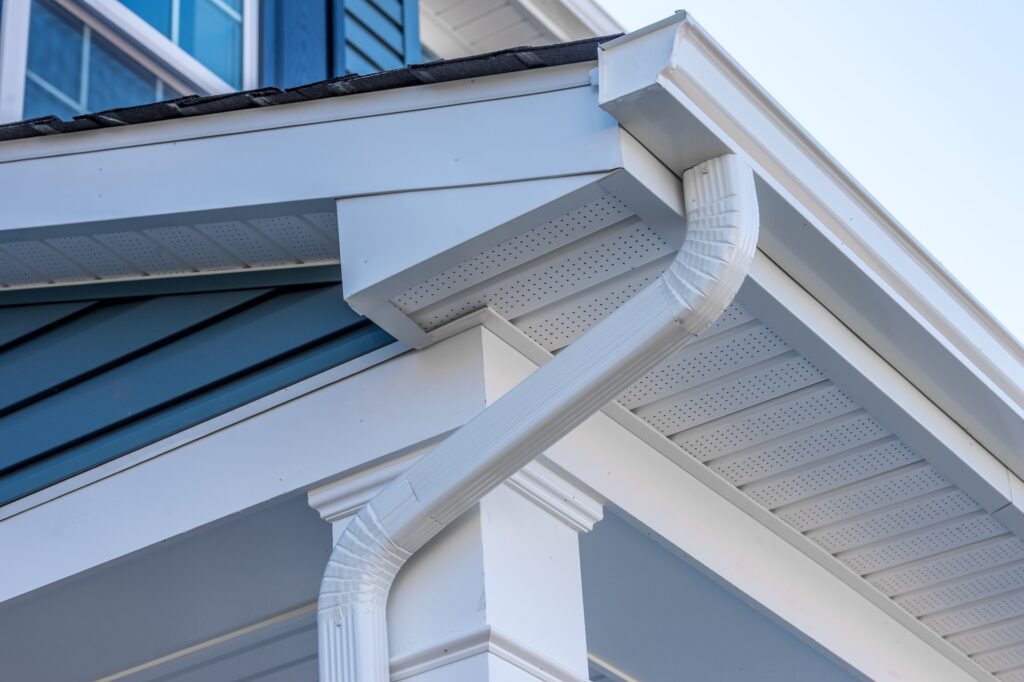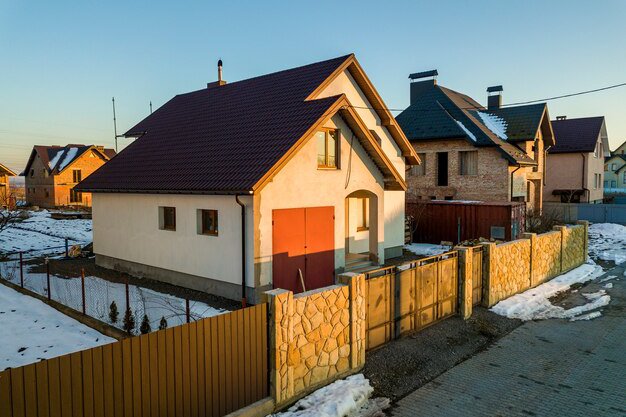Understanding Solar Roofing for Homes in West Linn, Oregon
Homeowners in West Linn, Oregon, are increasingly exploring ways to enhance their property's energy efficiency and reduce utility costs. One significant innovation gaining traction is solar roofing. More than just adding panels to an existing roof, solar roofing can involve integrated systems that blend seamlessly with traditional roofing materials, offering both protection and power generation. This guide delves into what solar roofing is, its benefits, the different types available, and what you need to consider if you're thinking about making the switch.
What is Solar Roofing?
At its core, solar roofing refers to systems that harness sunlight and convert it into usable electricity for your home. While the term is sometimes used interchangeably with installing traditional solar panels on a roof, it increasingly encompasses newer technologies like solar shingles or tiles that function as both the roof covering and the power generator.
The fundamental technology relies on photovoltaic (PV) cells. These small, semiconductor-based components absorb photons from sunlight, which excites electrons and creates an electric current. This direct current (DC) electricity is then sent to an inverter, which converts it into alternating current (AC) electricity – the type of power used by appliances and the grid.
A complete solar roofing system typically includes:
- PV Modules: The panels, shingles, or tiles containing the PV cells.
- Mounting Hardware: Secures panels to the roof deck (for traditional panels).
- Inverter(s): Convert DC to AC electricity. Can be a single central inverter or smaller microinverters attached to individual panels.
- Wiring: Connects the components.
- Monitoring System: Allows you to track energy production.
- Metering: Often involves a bidirectional meter for net metering with the utility company.
Understanding these components is the first step in evaluating if solar roofing is the right choice for your home.
Types of Solar Roofing Systems
When considering solar roofing, you generally have two main options: traditional solar panels installed on top of your existing roof, or integrated solar roofing materials like shingles or tiles that replace conventional roofing.
Traditional Solar Panels
This is the most common form of residential solar installation. PV panels are mounted on racks that are attached to the roof structure, typically over the existing roofing material (like asphalt shingles, metal, or tile).
- Appearance: Panels sit above the roof surface, creating a distinct look. They are visible and can impact the aesthetic of the home, though mounting systems have become more streamlined.
- Efficiency: Generally offer high efficiency per square foot, maximizing energy production from the available roof area.
- Installation: Can be installed relatively quickly on a structurally sound roof. The roof itself must be in good condition or replaced before panel installation, as panels have a long lifespan (often 25+ years) and removing/reinstalling them for a roof replacement is an added cost.
- Cost: Typically has a lower upfront cost compared to integrated systems.
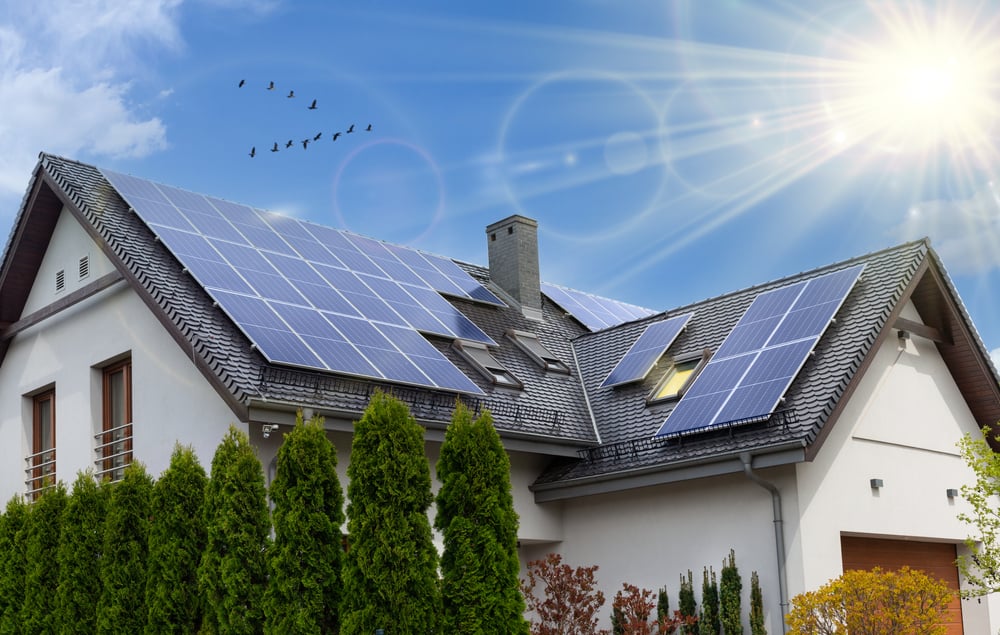
Integrated Solar Roofing (Solar Shingles/Tiles)
These systems replace traditional roofing materials entirely or are installed alongside them as the primary weather barrier. They are designed to blend in, appearing similar to standard shingles or tiles.
- Appearance: Designed for aesthetics, integrating seamlessly with the roofline. They are much less noticeable than traditional panels.
- Efficiency: Historically less efficient per square foot than traditional panels, requiring more roof area for the same energy output. However, efficiency is improving with newer generations.
- Installation: Requires a full roof replacement. Installation involves roof deck preparation, laying the solar shingles/tiles, and then connecting the electrical components. This process is more complex and takes longer than installing panels on an existing roof.
- Cost: Has a significantly higher upfront cost due to the dual function (roof + solar) and more complex installation. However, this cost can be offset if a roof replacement was already necessary.
- Durability: Functions as the primary roof covering, designed to withstand weather like traditional roofing materials.
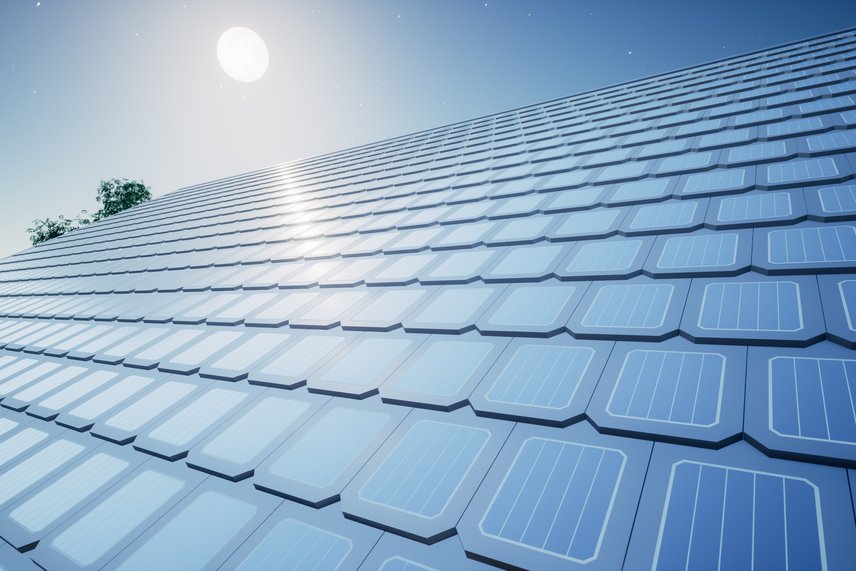
Choosing between these options depends on your priorities regarding budget, aesthetics, required energy output, and the current condition of your existing roof.
Key Benefits of Solar Roofing
Investing in solar roofing offers a multitude of advantages beyond just aesthetics, impacting your finances, the environment, and your home's overall value.
Significant Energy Savings
The most immediate and tangible benefit is the reduction, and often elimination, of your monthly electricity bills. By generating your own power, you rely less on the utility company. With net metering policies (common in many areas), excess energy your system produces during the day can be sent back to the grid, often earning you credits on your bill that can offset usage at night or on cloudy days. Over the lifespan of the system, these savings can add up to tens of thousands of dollars.
Environmental Impact
Solar energy is a clean, renewable resource. By using solar power, you reduce your reliance on fossil fuels, lowering your home's carbon footprint. This contributes to cleaner air and helps combat climate change, aligning with growing environmental consciousness.
Increased Home Value
Homes equipped with solar systems, whether panels or integrated roofing, typically sell faster and at a higher price than comparable homes without solar. Buyers are increasingly willing to pay a premium for homes with lower energy costs already in place. The value added often exceeds the initial investment cost.
Financial Incentives
Government incentives, both federal and potentially state or local, can significantly reduce the upfront cost of solar roofing. The federal solar investment tax credit (ITC) allows homeowners to deduct a substantial percentage of the system cost from their federal taxes. Additional state or local rebates, tax exemptions, or performance-based incentives may also be available, further improving the return on investment. It's essential to research current incentives applicable to your area.
Long-Term Reliability and Low Maintenance
Once installed, solar roofing systems are remarkably reliable and require very little maintenance. There are no moving parts in the panels or shingles themselves. Occasional cleaning might be needed in dusty or pollen-heavy environments, but rain often takes care of this. Inverters and other electrical components may require checks, but issues are infrequent. Most systems come with long warranties (often 25 years for panels/shingles and 10-12 years for inverters), providing peace of mind.
Important Considerations Before Installing Solar
While the benefits are compelling, installing solar roofing is a significant investment that requires careful consideration of several factors.
Condition of Your Existing Roof
This is paramount, especially for traditional panel installations. Solar panels are designed to last 25-30 years or more. If your current roof is nearing the end of its lifespan (e.g., asphalt shingles typically last 15-25 years), it's highly recommended to replace the roof before installing solar panels. Installing panels on an old roof means you'll incur the cost of removing and reinstalling the panels when the roof eventually needs replacement, adding significantly to the overall expense. For integrated solar roofing, a full roof replacement is inherently part of the process.
Sun Exposure and Roof Orientation
Solar panels and shingles work best when they receive direct sunlight for the majority of the day. South-facing roofs are ideal in the Northern Hemisphere, but east and west-facing roofs can also be viable. Shading from trees, taller buildings, or even chimneys can significantly reduce energy production. An energy assessment will evaluate your roof's solar potential based on its orientation, pitch, and shading.
Structural Integrity
Your roof structure must be strong enough to support the added weight of solar panels and mounting hardware, or the integrated solar roofing material. While modern systems are designed to be relatively lightweight, a structural evaluation may be necessary, especially for older homes or if you plan a large installation.
Upfront Cost and Financing
Solar roofing is a substantial investment. Costs vary widely based on the system size, type (panels vs. shingles), and complexity of the installation. While incentives help, you'll need a plan for the initial expenditure. Options include cash payment, solar loans (secured or unsecured), or potentially power purchase agreements (PPAs) or leases offered by solar companies (though ownership generally provides the best long-term financial return).
Permitting and Regulations
Installing solar roofing involves electrical work and changes to your home's structure, requiring permits from local building departments. There may also be specific regulations regarding solar installations. Navigating the permitting process can be complex and time-consuming. A qualified solar roofing contractor will handle this process for you.
Homeowners Association (HOA) Rules
If you live in a community with an HOA, check their rules regarding solar panel or solar roofing installations. While many states have laws protecting homeowners' rights to install solar, HOAs may still have guidelines regarding placement or appearance.
Considering these factors will help you determine the feasibility and potential return on investment for a solar roofing project on your home.
The Installation Process
Once you've decided to move forward with solar roofing, understanding the typical installation process can help you know what to expect.
- Initial Consultation and Site Assessment: A solar professional will visit your home to evaluate your roof's condition, size, orientation, pitch, and shading. They will also assess your energy needs based on your electricity bills.
- System Design: Based on the assessment, the contractor will design a solar system tailored to your home's energy requirements and roof characteristics. This includes determining the number and type of panels/shingles, inverter type, and system layout. They will also provide a detailed proposal outlining costs, estimated energy production, and financial incentives.
- Permitting and Approvals: The contractor will submit the necessary plans and applications to your local building department and potentially your utility company for interconnection approval. This phase can take several weeks.
- Roof Preparation: If installing traditional panels on an older roof, a full roof replacement will occur first. For integrated solar roofing, the old roof is removed down to the deck. Any necessary repairs or structural reinforcements are made. New underlayment and flashing are installed.
- Mounting System Installation (for panels): Racks are securely attached to the roof rafters or decking, providing the structure for the panels. Penetrations are sealed to ensure watertightness.
- Solar Panel or Shingle Installation: The PV modules (panels or shingles) are installed and secured onto the mounting system or directly to the roof deck.
- Electrical Wiring: Electricians connect the panels/shingles to the inverter(s) and wire the system to your home's electrical panel. This involves running conduit and making necessary connections.
- Inverter and Component Installation: The inverter(s), disconnect switches, and monitoring equipment are installed, typically in a garage, basement, or outside near the meter.
- System Inspection: Once installation is complete, the system must pass inspection by the local building department.
- Utility Interconnection: After passing inspection, the utility company performs its own check and installs a net meter (if applicable).
- System Activation: Once the utility grants permission to operate (PTO), the system is turned on, and you begin generating your own clean energy!
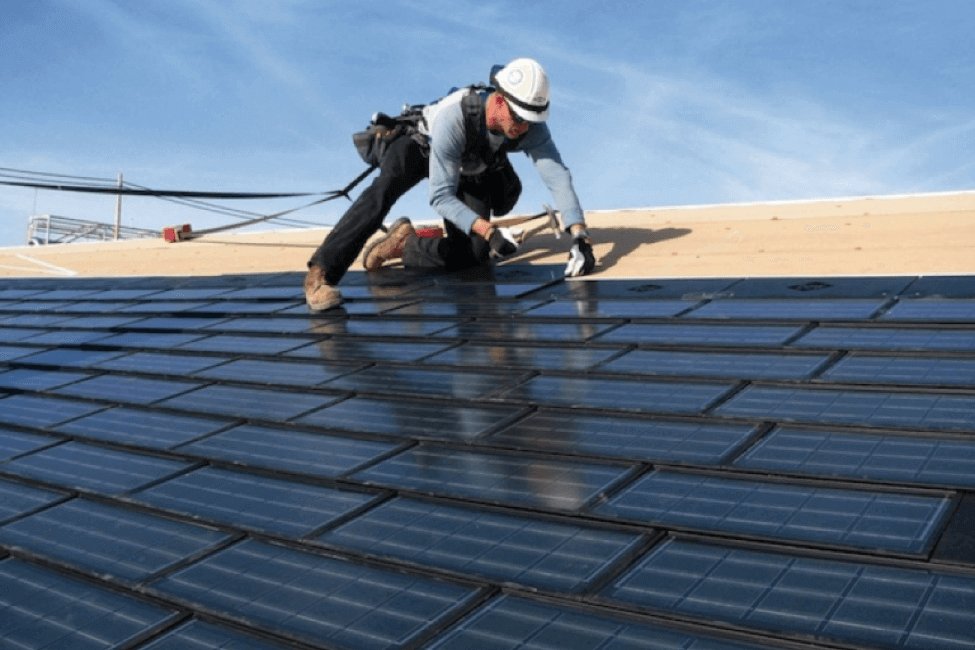
The entire process, from initial consultation to system activation, can take anywhere from a few weeks to a few months, depending on permitting timelines and contractor scheduling.
Maintaining Your Solar Roof
One of the attractive aspects of solar roofing is its low maintenance requirement.
- Cleaning: In most climates, rain is sufficient to keep the surface of panels or shingles clean. However, if you live in an area with significant dust, pollen, or bird activity, occasional cleaning may be necessary to maintain optimal efficiency. Use a hose or work with a professional cleaning service; avoid harsh chemicals or abrasive materials.
- Inspections: Periodically inspect the system for any visible damage, loose wiring, or obstructions (like leaves or debris). It's also wise to have a professional solar or roofing contractor perform a check every few years to ensure all components are functioning correctly and securely.
- Monitoring: Use your system's monitoring software to track energy production. A sudden drop in output can indicate an issue that needs investigation.
Compared to the ongoing maintenance of traditional roofing or other home systems, solar roofing is remarkably hands-off.
Comparing Solar Roofing Options
Choosing between integrated solar roofing and traditional panels involves weighing various factors. Here's a simplified comparison:
| Feature | Integrated Solar Roofing (Shingles/Tiles) | Traditional Solar Panels |
|---|---|---|
| Appearance | Seamless, blends with roof | Sits above roof, more visible |
| Roof Condition | Requires full roof replacement | Requires existing roof to be in good condition or replaced |
| Efficiency | Generally lower per sq ft (improving) | Generally higher per sq ft |
| Installation | Part of roof replacement, more complex | Installed on existing roof, less complex |
| Upfront Cost | Higher | Lower |
| Durability | Functions as primary weather barrier | Protects roof underneath; panels are durable |
| Ideal For | Homeowners needing a roof replacement & prioritizing aesthetics | Homeowners with a good roof & prioritizing efficiency/cost |
This comparison highlights the trade-offs. Integrated systems are best suited for homeowners who are already planning a roof replacement and strongly prioritize curb appeal. Traditional panels are often the more cost-effective choice if your roof is relatively new and your primary goal is maximizing energy production for the investment.
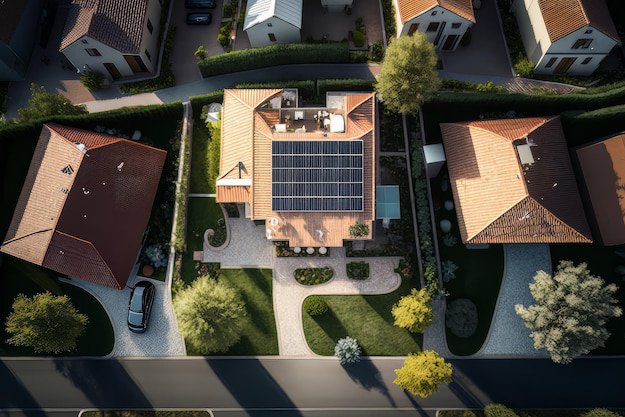
Finding the Right Roofer for Solar Installation
Selecting a qualified and experienced professional is crucial for a successful solar roofing installation. Look for contractors with specific experience in solar installations, whether it's traditional panel mounting or integrated solar roofing systems. They should be licensed, insured, and ideally have certifications related to solar technology.
Getting accurate estimates is a vital step in the process. This helps you understand the potential costs involved and compare bids from different contractors.
Getting an initial understanding of potential costs for a solar roofing project can be helpful for planning.
You can quickly get a preliminary estimate based on satellite imagery and local data: Get your free instant roof estimate
Once you have a preliminary idea of costs or if you're ready for detailed assessments and quotes, you'll need to connect with professionals.
When you're ready to move forward with professional consultations and installation, finding a qualified local roofer is crucial.
Simplify the process of connecting with pre-vetted contractors experienced in solar roofing: Book a roofing appointment
A good contractor will perform a thorough assessment, explain your options clearly, provide a detailed proposal, handle permitting, and stand behind their work with warranties. Don't hesitate to ask for references and check online reviews.
Long-Term Value and Return on Investment
While the initial cost of solar roofing can be substantial, the long-term value and return on investment (ROI) are often very compelling.
The primary financial return comes from the energy savings over the system's lifespan. By reducing or eliminating your electricity bills, the system essentially pays for itself over time. The payback period varies depending on the system cost, energy production, local electricity rates, and available incentives, but it's often projected to be between 8 and 15 years. After the payback period, the energy produced is essentially free electricity for the remainder of the system's life, which can extend 25-30 years or more.
Furthermore, as mentioned, solar installations significantly increase property value. This added value is often realized when you sell your home. In a competitive real estate market, a home with an already-installed, functioning solar system is a major selling point.
Considering the combination of energy savings, potential incentives, and increased property value, solar roofing represents a sound long-term financial investment for many homeowners.
Powering Your Home Sustainably
Embracing solar roofing is a forward-thinking decision that offers compelling benefits for homeowners. From the significant reduction in energy bills and positive environmental impact to the increase in your home's market value, transitioning to solar power is an investment in both your property and a sustainable future. Understanding the different system types, key considerations, and the installation process is essential for making an informed choice. Working with experienced professionals ensures that your solar roofing system is designed correctly, installed safely, and performs optimally for decades to come, providing reliable, clean energy for your home.
